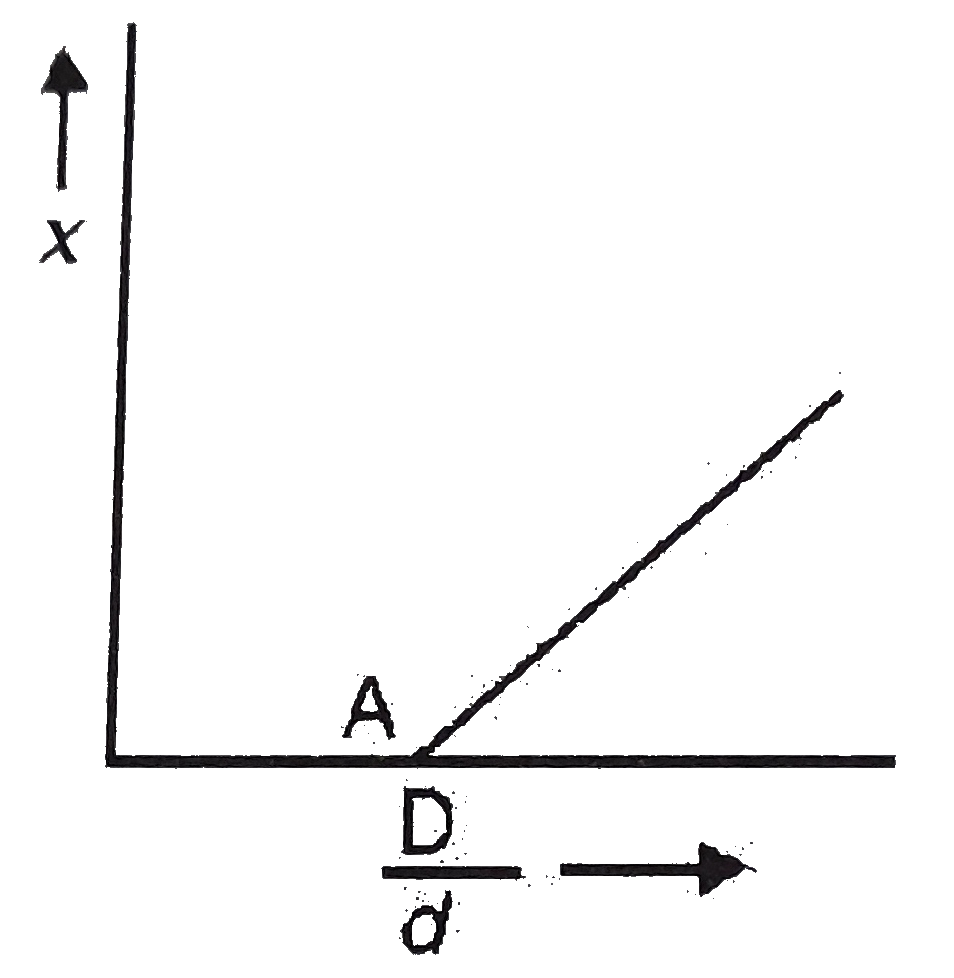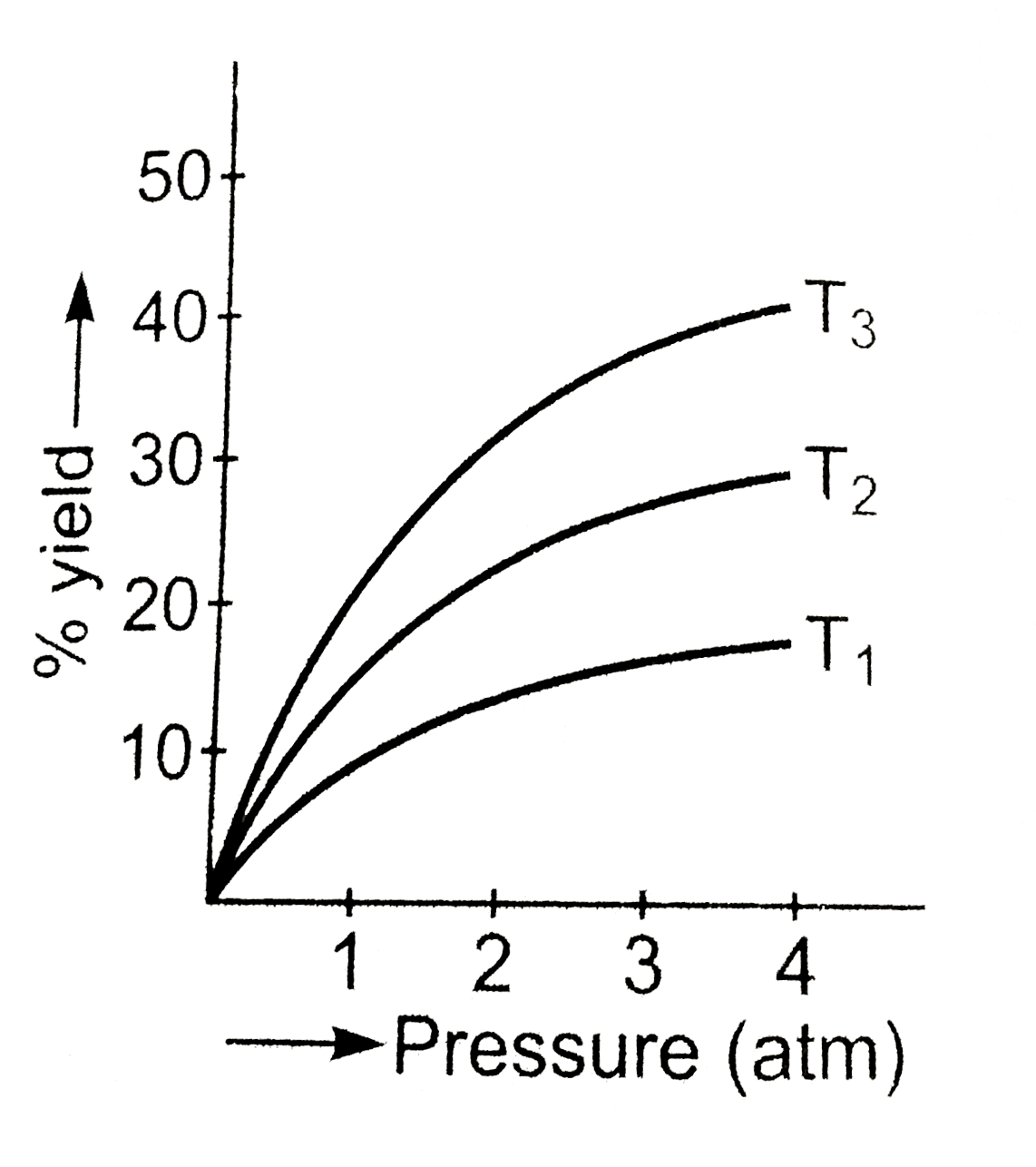Complete Solutions to Exercise -II (H.W.) of chapter CHEMICAL EQUILIBRIUM of Class 11 book with complete answers and questions
| Class 11 | CHEMISTRY |
| Chapter | CHEMICAL EQUILIBRIUM |
| NARAYANA | Exercise -II (H.W.) |
| Number Of Questions | 49 |
| Academic Year | 2023-24 |
v36.3
View Solution`2 "mole"` of `PCl_(5)` were heated in a closed vessel of `2 litre` capacity. At equilibrium `40%` of `PCl_(5)` dissociated into `PCl_(3)` and `Cl_(2)`. The value of the equilibrium constant is:
View SolutionHow much `PCl_(5)` must be added to a one little vessel at `250^(@)C` in order to obtain a concentration of 0.1 mole of `Cl_(2)` at equilibrium. `K_(c)` for `PCl_5(g)hArrPCl_(3)(g)+Cl_(2)(g)` is `0.0414`
View SolutionPhosphorus pentachloride dissociates as follows in a closed reaction vessel.
`PCl_5(g) hArr PCl_3(g) +Cl_2(g)`
If total pressure at equilibrium of the reactions mixture is P and degree of dissociation of `PCl_5`is x, the partial pressure of `PCl_3` will be:
View SolutionAn amount of solid `NH_4HS` is placed in a flask already containing ammonia gas at a certain temperature and 0.50 atm pressure.Ammonium hydrogen sulphide decomposes to yield `NH_3` and `H_2S` gases in the flask.When the decomposition reaction reaches equilibrium, the total pressure in the flask rises to 0.84 atm ? The equilibrium constant for `NH_4HS` decomposition at this temperature is :
View SolutionA mixture of `SO_(3), SO_(2)` and `O_(2)` gases is maintained in a `10 L` flask at a temperature at which the equilibrium constant for the reaction is `100`:
`2SO_(2)(g)+O_(2)(g)hArr2SO_(3)(g)`
a. If the number of moles of `SO_(2)` and `SO_(3)` in the flask are equal. How many moles of `O_(2)` are present?
b. If the number of moles of `SO_(3)` in flask is twice the number of moles of `SO_(2)`, how many moles of oxygen are present?
View SolutionWhat percent of `CO_2` in air is just sufficient to prevent loss in weight when `CaCO_3` is heated at `100^@C`?
(Equilibrium contant K for `CaCO_3(s) hArr CaO(s)+CO_2(g)` is 0.0095 atm at `100^@C`)
View SolutionFor the reaction, `AB(g)hArr A(g)+B(g), AB" is "33%` dissociated at a total pressure of 'p' Therefore, 'p' is related to `K_(p)` by one of the following options
View SolutionWhen `20 g` of `CaCO_(3)` were put into `10 litre` flask and heated to `800^(@)C`, `35%` of `CaCO_(3)` remained unreacted at equilibrium. `K_(p)` for decomposition of `CaCO_(3)` is :
View SolutionFor the reaction
`2HI(g)hArrH_(2)(g)+I_(2)(g)+I_(2)(g)`
The degree of dissociation `(alpha)` of `HI(g)` is related to equilibrium constant `K_(p)` by the expression
a. `(1+2sqrt(K_(p)))/2`, b. `sqrt((1+2K_(p))/2)`
c. `sqrt((2K_(p))/(1+2K_(p)))`, d. `(2sqrt(K_(p)))/(1+2sqrt(K_(p)))`
View SolutionFor the reaction `N_(2)O_(4)(g) hArr 2NO_(2)(g)` the degree of dissociation at equilibrium is 0.2 at 1 atmospheric pressure. The equilibrium constant `K_(p)` will be
View SolutionFor the reaction `N_(2)O_(4)hArr 2NO_(2(g)),` the degree of dissociation of `N_(2)O_(4)` is 0.2 at 1 atm. Then the `K_(p)` of `2NO_(2)hArr N_(2)O_(4)` is
View Solution3.00 mol of `PCl_(5)` kept in 1 L closed reaction vessel was allowed to attain equilibrium at 380K. Calculate the composition of the mixture at equilibrium. `K_(c) = 1.80.`
View SolutionGram (+) and Gram (-) forms of bacteria are differentible through staining with
View SolutionThe dissociation equilibrium of a gas AB, can be represented as The degree of dissociation is x and is small compared to 1. The expression relating the degree of dissociation (x) with equilibrium constant K,, and total pressure p is
View SolutionIf the concentration of `OH^(-)` ions in the reaction
`Fe(OH)_(3)(s)hArrFe^(3+)(aq.)+3OH^(-)(aq.)`
is decreased by `1//4` times, then the equilibrium concentration of `Fe^(3+)` will increase by
View SolutionWhen a mixture of 10 moles of `SO_(2)` and 15 moles of `O_(2)` was passed over catalyst, 8 moles of `SO_(3)` was formed. How many moles of `SO_(2)` and `O_(2)` did not enter into combination?
View SolutionThe concentration of reactants is increased by x, then equilibrium constant K becomes
View SolutionThe active mass of water at `4^(0)C` is
View Solution1 mol of `N_2` and 4 mol of `H_2` are allowed to react in a vessel and after reaction, `H_2O` is added. Aqueous solution required 1 mol of HCI for neutralization. Mol fraction of `H_2` in the mixture after reaction is :
View SolutionAt a certain temperature and a total pressure of `10^(5) Pa`, iodine vapour contains `40%` by volume of `I "atoms"`, Calculate `K_(p)` for the equilibrium.
`I_(2(g))hArr2I_((g))`
View SolutionThe degree of ionization of 0.10 M lactic acid is 4.0%

The value of `K_(C)`
View SolutionThe reaction of dimerisation of `NO_(2)` in `N_(2)O_(4)` is `2NO_(2)hArrN_(2)O_(4)`. The reaction is carried out by taking `1` mole each of `NO_(2)` and `N_(2)O_(4)` in a closed vessel of `1` litre at `400 K`. The equilibrium pressure was found to be `77 atm`.
The ratio of partial pressures of `NO_(2)` and `N_(2)O_(4)` at equilibrium is:
View SolutionA vessel at `1000 K` contains carbon dioxide with a pressure of `0.5 atm`. Some of the carbon dioxide is converted to carbon monoxide on addition of graphite. Calculate the value of `K_(p)` if total pressure at equilibrium is `0.8 atm`.
View SolutionFor an equilibrium reaction, `N_(2)O_(4)(g) hArr 2NO_(2)(g)`, the concentrations of `N_(2)O_(4)` and `NO_(2)` at equilibrium are `4.8 xx 10^(-2)` and `1.2 xx 10^(-2) mol//L` respectively. The value of `K_(c)` for the reaction is
View SolutionIn the dissociation of `PCl_(5)` as
`PCl_(5)(g) hArr PCl_(3)(g)+Cl_(2)(g)`
If the degree of dissociation is `alpha` at equilibrium pressure P, then the equilibrium constant for the reaction is
View Solution`Ag^(+) + NH_(3) ltimplies [Ag(NH_(3))]^(+), k_(1)=6.8 xx 10^(-5)`
`[Ag(NH_(3))]^(+) + NH_(3) ltimplies [Ag(NH_(3))_(2)]^(+)`,
`k_(2) = 1.6xx10^(-3)`
The formation constant of `[Ag(NH_(3))_(2)]^(+)` is :
View SolutionThe most stable oxides of nitrogen will be :
View SolutionIn the reaction
`PCl_(5)(g) hArr PCl_(3)(g)+Cl_(2)(g)`, the equilibrium concentrations of `PCl_(5)` and `PCl_(3)` are 0.4 and 0.2 mole `//` litre respectively. If the value of `K_(c)` is 0.5 , what is the concentration of `Cl_(2)` in moles `//` litre ?
View SolutionThe equilibrium constant for the given reaction:
`SO_(3(g))hArrSO_(2(g))+1//2O_(2(g))`, `(K_(c)=4.9xx10^(-2))`
The value of `K_(c)` for the reaction:
`2SO_(2(g))+O_(2(g))hArr2SO_(3(g))`, will be :
View Solution`K_(c)` for `3//2H_(2)+1//2N_(2) hArr NH_(3)` are `0.0266` and `0.0129 atm^(-1)`, respectively, at `350^(@)C` and `400^(@)C`. Calculate the heat of formation of `NH_(3)`.
View SolutionFor the following reactions `(1) , (2)` and `(3)` equilibrium constants are given
`(1) CO_(2)(g) +H_(2)O(g) hArr CO_(2)(g) +H_(2)(g), K_(1)`
`(2) CH_(4)(g) +H_(2)O(g) hArr CO(g)+3H_(2)(g),K_(2)`
`(3) CH_(4)(g)+2H_(2)O(g) hArr CO_(2)(g)+4H_(2)(g), K_(3)`
Which of the following relation is correct ?
View SolutionFor the reaction `2NO_(2)(g) hArr 2NO(g)+O_(2)(g)`
`K_(c)=1.8xx10^(-6)` at `184^(@)C, R=0.00831 kJ //` ( mol.K) when `K_(p)` and `K_(c)` are compared at `184^(@)C`, it is found
View SolutionThe vapour pressure of water at 25°C is 0.0313 atm. Calculate the values of `K_(p)` and Kc at 25°C for the equilibrium `H_(2)O(1)hArr H_(2)O(g)`.
View SolutionOne `dm^(3)` of hydrogen is present in a flask at a pressure of `10^(-12)` bar of Hg and at `0^(@)C`. Calculate the number of oxygen molecules in the flask.
View SolutionFor the reaction at `25^(@)C`,
`C_(2)H_4(g)+H_(2)(g) LeftrightarrowC_(2)H_(6)(g), K_(p)=308.08`
What is `DeltaG^(@)` for this reaction in `kJxxmol^(-1)`?
View SolutionIn the dissociation of `N_(2)O_(4)` into `NO_(2), (1+ alpha)` values with the vapour densities ratio `((D)/(d))` is given by: [`alpha` degree of dissociation, D-vapour density before dissociation, d-vapour density after dissociation]
View SolutionThe degree of dissociation of `PCl_(5)` will be more at ………. pressure.
View SolutionBefore equilibrium is set-up for the chemical reaction, `N_(2)O_(4)hArr 2NO_(2)`, vapour density of the gaseous mixture was measured. If D is the theoretical value of vapour density, variation of x with `D//d` is by the graph.

View SolutionFor reacrtion `2NOC1(g) hArr 2NO(g) + C1_(2)(g)` , `K_(c)` at `427^(@)C` is `3xx10^(-6)` L `mol^(-1)`. The value of `K_(p)` is nearly
View Solution`N_(2)O_(4)` is dissociated to `33%` and `50%` at total pressure `P_(1)` and `P_(2)atm` respectively. The ratio of `P_(1)//P_(2)` is:
View SolutionThe following equilibrium constants are given :
` N_(2) + 3 H_(3) hArr 2 NH_(3) , K_(1)`
` N_(2) + O_(2) hArr 2 NO , K_(2)`
` H_(2) + 1/2 O_(2) hArr H_(2) O , K_(3)`
The equilibrium constant for the oxidation of `NH_(3)` by oxygen to give NO is :
View SolutionFor the reaction, `PCl_(3) (g)+Cl_(2) (g) Leftrightarrow PCl_(5) (g)" at "27^@C, K_p" is 0.41 atm"^(-1).` Then `K_c` is :
View SolutionThe equilibrium constant `K_(p_(1))` and `K_(p_(2))` for the reactions `XhArr2Y` and `ZhArrP+Q`, respectively are in the ratio of `1:9`. If the degree of dissociation of `X` and `Z` be equal, then the ratio of total pressure at these equilibrium is:
View SolutionRate of diffucion of ozonized oxygen is `0.4sqrt5` times that of pure oxygen what is the per cent degreeof association of oxygen assuming pure `O_(2)` in the sample initially ?
View SolutionFor the reaction, `SO_(2)(g) + (1)/(2)O_(2)(g)hArrSO_(3) (g)`, If `K_(p) = K_(c) (RT)^(x)` where the symbols have usual meaning then, the value of x is (assuming ideality).
View SolutionFor the reaction,
`N_(2)O_(4)(g)hArr 2NO_(2)(g)`
the reaction connecting the degree of dissociation `(alpha)` of `N_(2)O_(4)(g)` with eqilibrium constant `K_(p)` is
where `P_(tau)` is the total equilibrium pressure.
View SolutionThe prepation of `SO_(3)(g)` by reaction `SO_(2)(g)+(1)/(2)O_(2)(g)hArrSO_(3)(g)` is an exothermic reaction .If the preparation follows the following temperature -pressure relationship for % yield , then for temperatures `T_(1),T_(2)andT_(3)` the correct option is:

View SolutionFor a reaction at equilibrium `PCl_(5(g)) Leftrightarrow pcL_(3(G))+Cl_(2(g))`, the degree of dissociation of `PCl_(5)` at 2 atm is 0.02. Then the degree of dissociation at 4 atm is
View Solution
Exercise -II (H.W.) questions and complete solutions for chapter CHEMICAL EQUILIBRIUM of NARAYANA CHEMISTRY (HINGLISH) of Class 11